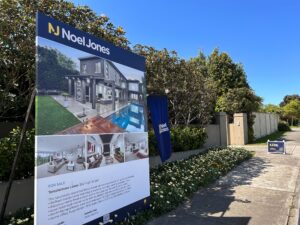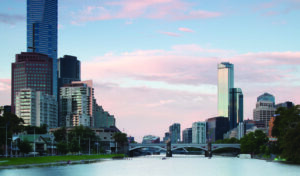Melbourne’s soaring population looks set to place property in even greater stead, the historically well-performing asset likely becoming increasingly sought-after as more and more people flock to our shores, cityscapes and suburbs.
As Tim Penhalluriack, Auctioneer and Director of Noel Jones Balwyn, explains, it’s a simple question of supply and demand. “High demand coupled with limited supply in any market exerts upward pressure on prices. With significantly more people arriving than the number of new homes and apartments being built bring,” he adds, “population growth stimulates both the property market and the wider economy.”
Booming Melbourne, in fact, is set to become the nation’s largest city by 2026 according to Domain, with 327 people from around the globe arriving daily. With the Australian Bureau of Statistics reporting 119,421 new arrivals to Greater Melbourne in 2017-2018, and around 70,000 per annum since 2005, the city’s population has now topped a record 5 million.
Amidst a few growing pains and with infrastructure busy trying to keep up, if you thought the commute to work was getting longer and the traffic jams thicker, you’re right.
In fact, based on current growth rates the city’s swelling population is expected to overtake Sydney as the country’s most populated city by 2026, a first for more than 100 years. Sydney’s population now sits at around 5.2 million. However, while Melbourne welcomed some 460,000 people over the last three years, Sydney’s population grew by 300,000 for the same period.
While Melbourne is attracting a larger proportion of international immigrants to outpace Sydney’s migrant intake, it’s also attracting stronger interstate migration from Sydney and other capitals due to its more affordable housing and cost of living, two key factors driving Melbourne’s growth.
Only 65 per cent of Melbourne’s population increase throughout the year, however, was due to overseas migration. Between a steady influx of both overseas and interstate arrivals, Victorians from further afield, whether from the Surf Coast, Mornington Peninsula, Ballarat or Bendigo, are also increasingly ‘re-locating’ to the city, or part-time at least.
With the booming population pushing family homes further away from the CBD, a new type of property buyer is emerging, a growing trend seeing more people ditching the once-reasonable commute and buying a second property either in the city or on its equally attractive outskirts, living there during the working week and returning to their outer Melbourne or country home on weekends and holidays.
Dubbed ‘work-home buyers’, they’re enjoying much shorter commutes on public transport, more free time and a greater work-life balance. While not everyone can afford it, many can, Melbourne’s ever-changing property landscape, seeing many have their slice of Melbourne life – and eat it too.





